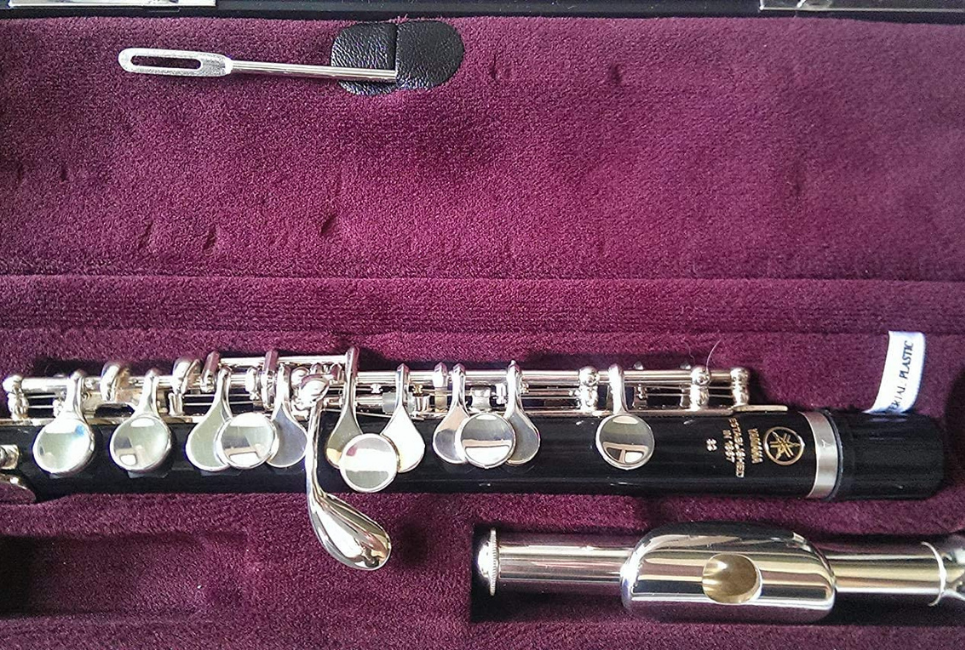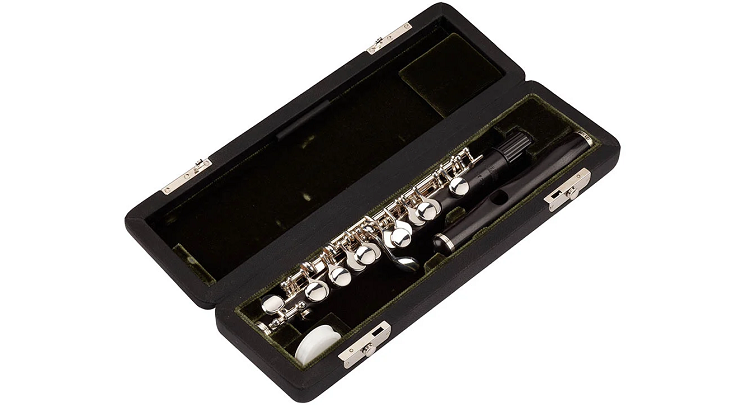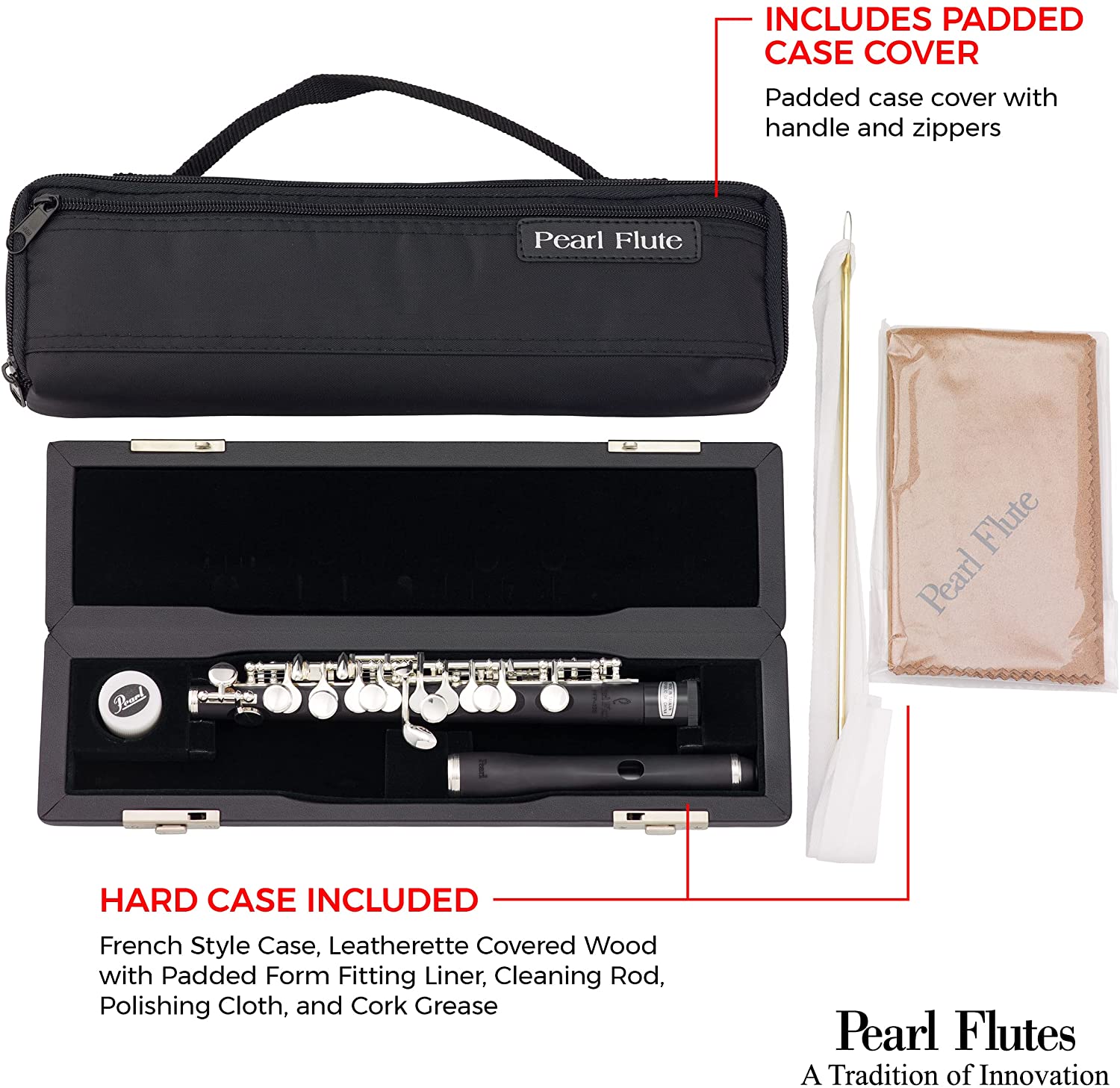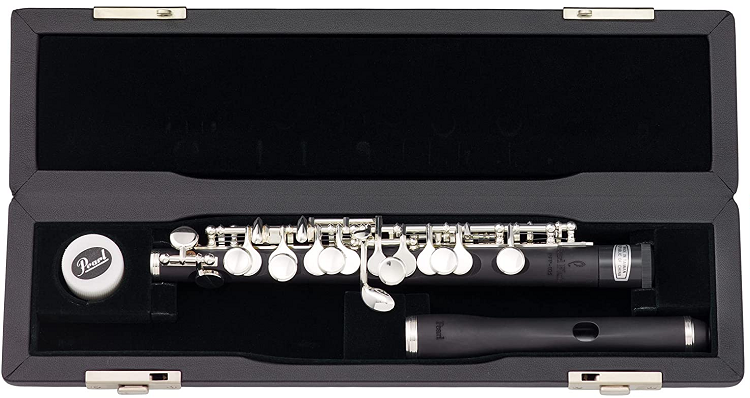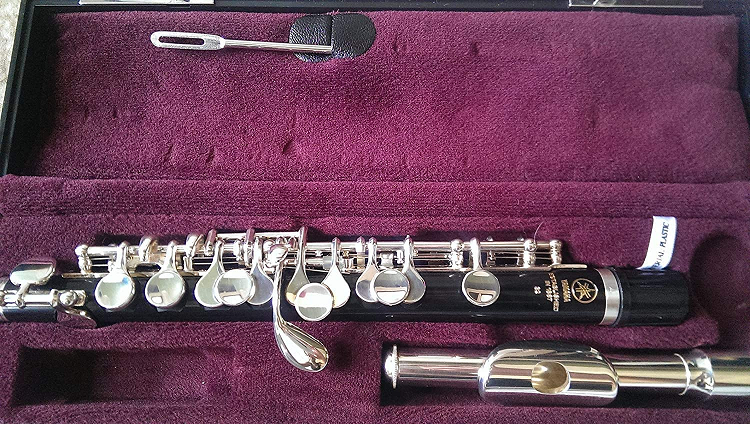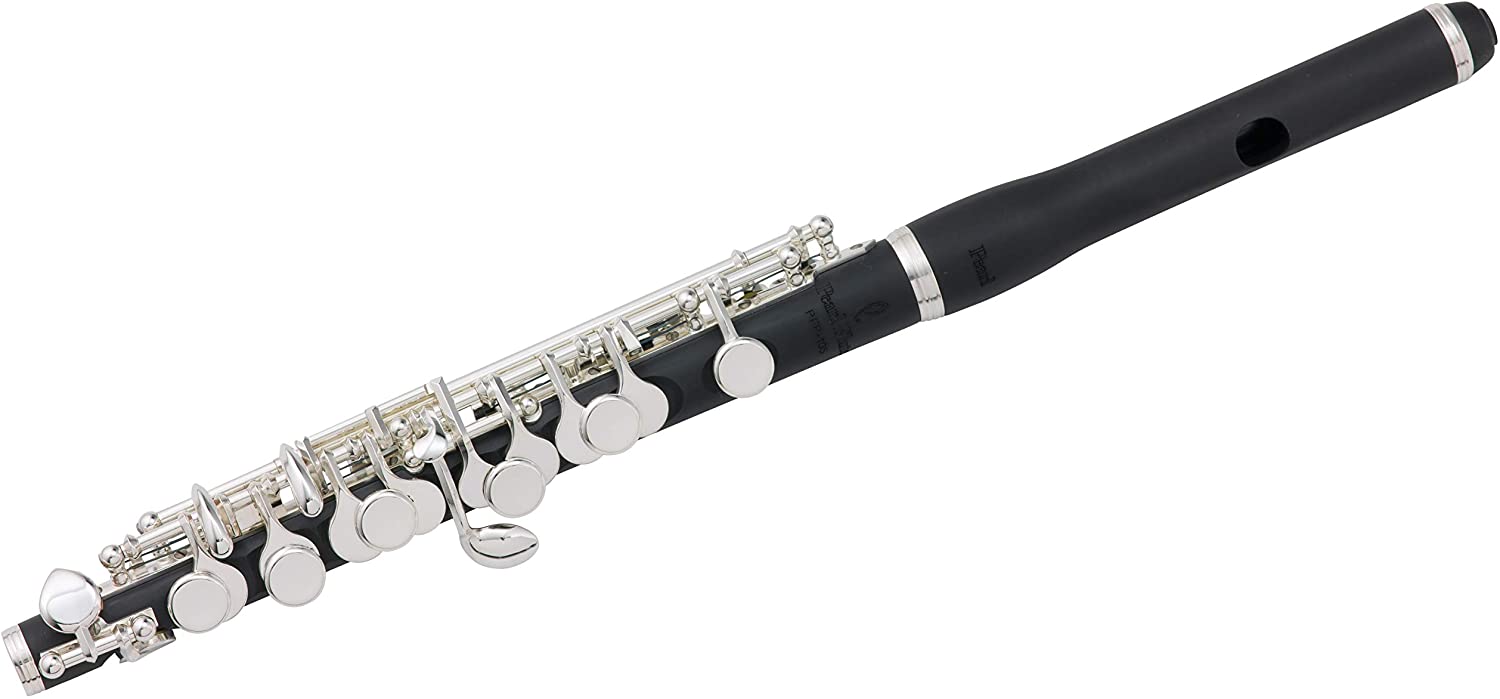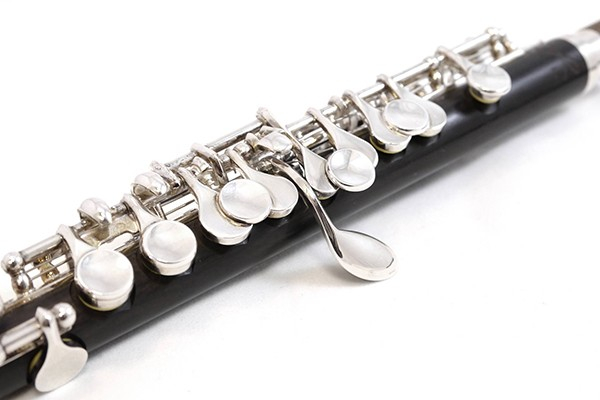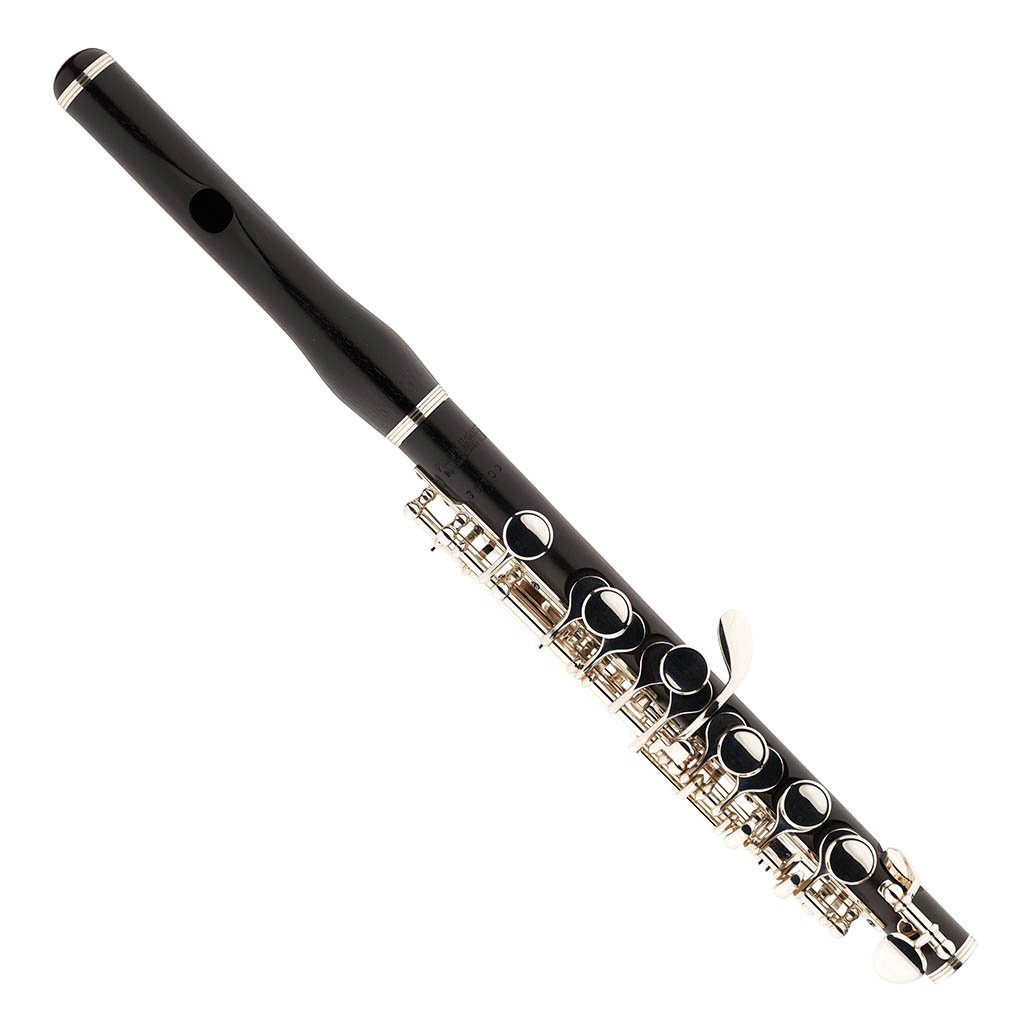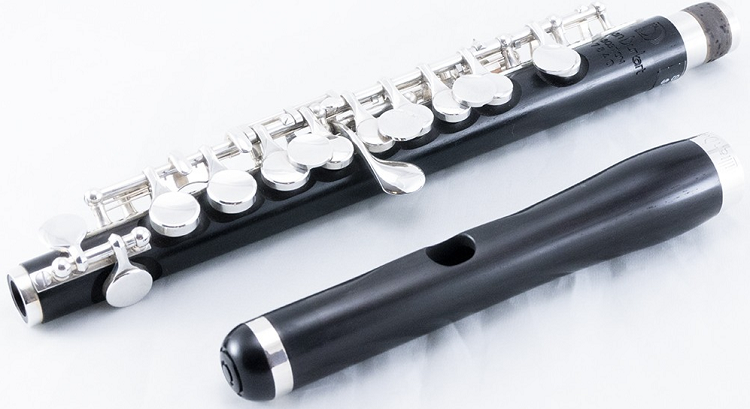- How to Find the Best Sopranino Saxophone - May 31, 2022
- How to Find the Best Contrabass Saxophone - May 30, 2022
- Trumpet Range Guide: Understanding The Entire Trumpet Range - May 19, 2022
Do you hate playing the piccolo because of its shrill sound? If so, you may want to learn how to find the best piccolo flute so that you can get an instrument that sounds nice.
A piccolo can be just as musical as any other instrument when played well. Part of that involves having the right instrument for the player.
Bottom Line Up Front: To find the best piccolo flute, you must consider the materials, specs, and price. Select a few models to find the one that works well with you and your playing style. It’s hard to recommend a singular model as my favorite because each musician will need something different.
How to Find the Best Piccolo Flute
As someone who owns three piccolos and has tried many more, I’ve learned a lot about how to find the best piccolo. It can take time, and no single model is suitable for everyone.
Fortunately, you can follow a few steps to find the best instrument for your needs. Then, you’ll be able to look forward to practicing the piccolo instead of cringing at how bad it can sound.
If you have the right piccolo, you can make it sound gorgeous. Here are some of my best tips for how to find your perfect piccolo.
Think About the Materials
First, you should think about the different piccolo materials. Like flutes, you can find metal piccolos, which may be silver-plated or solid silver.
However, you’ll also find plastic piccolos, wood models, and wood-plastic composite instruments. Metal and plastic piccolos are great for playing outdoors.
If you get a wood piccolo, you have to keep it at a consistent temperature. My wood piccolo managed to crack within about six or seven months of me buying it, but you can avoid that with proper care.
Composite models are excellent because they offer the benefits of wood without the risk of cracks. So you can store them for a long time without the condition dropping.
Consider Your Level
Another thing to note when buying a piccolo is your current level on the piccolo and the flute. If you’re looking for your first piccolo, you probably shouldn’t get a wood model.
However, you can get a metal or plastic instrument so that you can start learning the smaller flute. You can always upgrade later as you get more serious about playing the piccolo.
If you’re more advanced, you may still want to get a plastic instrument to use outside. Having a backup is also useful if you need to send your main model off for maintenance.
Set a Budget
Believe it or not, some piccolos cost close to $20,000. Luckily, most of them are around $5,000 to $6,000 or less, and some cost around $1,000 or less.
Because of that price difference, you should consider how much you can afford to spend. Knowing your budget can help you find the right model for you.
For my first piccolo, I had about $300 to spend. When I upgraded to my second piccolo, I had a little over $1,000. My budget for my most recent model was $5,000 or so, so you don’t need a massive budget to get a good instrument.
Look at the Specs
It may seem like piccolos are too small and compact to have different keys and specs. However, there are quite a few options out there, especially if you buy a more expensive model.
Many piccolos feature a split E mechanism to help the high E come out. Some expensive instruments have a vented C# key or a high G# mechanism, which can help with tuning and dynamics.
While they’re rare, piccolos like the Nagahara Mini even go down to a low C like a flute. So consider what specs you want as you make your budget and try instruments.
Start with Reputable Brands
Start with well-known brands as you look for your first or next piccolo. You may be able to find a piccolo from the same company as your flute, such as Yamaha or Pearl.
However, you can also buy piccolos from brands that specialize in that instrument, such as Hammig. I’ve never tried the lesser-known piccolos you find online, but I imagine they aren’t the best.
They may help you figure out if you like playing the piccolo. But you’ll need to upgrade sooner than if you spent more money on a better instrument.
Select Some Test Music
When trying any instrument, you want to use some music to test various models. That way, you have a baseline comparison to make between the different piccolos you try.
As I was trying wood piccolos, I used some exercises from Marcel Moyse’s 24 Petites Etudes Melodiques. The book has short exercises that allowed me to test each piccolo’s tone quality and intonation.
You can use flute music or piccolo music. In either case, make sure you test the whole range of the piccolo as well as things like dynamics and the mechanism response.
Try Multiple Piccolos
Especially if you’re buying your forever piccolo, you need to try multiple models. Before buying my first and second piccolos, they were the only ones I tried.
However, I tried five different piccolos before settling on my current model. Even before then, I’d tried another two or three models that didn’t end up working for me.
Trying different piccolos gives you the chance to find the one that’s right for you. If possible, try each model with traditional and wave headjoint cuts, as that can also affect how an instrument sounds.
Consider Aftermarket Headjoints
Another thing you can do to find the best piccolo is to try various headjoints. While I went with the factory headjoint with my piccolo, I know plenty of players who buy separate headjoints.
Makers like Hernandez and Mancke make a variety of headjoints for piccolos. The headjoints come in different cuts and use various woods to get the best possible sound for you.
Aftermarket headjoints are also worth trying if you want to change your current piccolo. A headjoint is almost always more affordable than a whole new instrument.
Ask for Recommendations
When I upgraded from my metal piccolo to a composite one, I didn’t have time to try a few options. Fortunately, my college flute professor recommended a specific model for me.
I was able to buy that model, and it served me well for over three years of consistent playing. That model got me through almost all of my master’s degree in flute and piccolo performance.
If you can’t test different models, ask your flute teacher or someone who knows your playing for a suggestion. The model may not work for you, but you could luck out and save a lot of time.
Don’t Ignore Used Models
As long as the seller has kept their piccolo in good condition, buying used is an excellent option. When I got my first piccolo, it was a used model that my flute tech was selling for another client of hers.
My parents were nice enough to pay for that model, and they saved over half of the cost of the instrument. I was able to use it for a couple of years in college marching band.
If you’re on a tight budget, you may want to look for used piccolos. Then, you can get more bang for your buck, so you may get a better model than you can afford new.
Be Patient
One of the most important parts of buying any instrument is not to rush the process. This is particularly crucial when you’re looking to spend thousands of dollars.
I casually started shopping for wood piccolos about three years before I bought one. When I finally did buy an instrument, I knew what I was looking for.
That made it a lot easier to test different piccolos and headjoints. If you’re just starting to look for a piccolo, take your time to find one that meets your needs.
Best Piccolos for All Levels
If you’re ready to follow the steps to find the best piccolo, you need to know where to start. There are more piccolos out there than you might think.
In the almost eight years I’ve played the instrument, I’ve tried around a dozen models or more. To help you simplify your trial process, I want to share some of the best models I’ve tried.
While I don’t own all of these models, I can say they’re worth testing out. Then, you can select the model that suits your playing and budget.
Armstrong 204
The Armstrong 204 was the first piccolo I got, and it’s an excellent model years later. I got a used one, but it was still in good condition, and I was able to play it in marching band and other scenarios.
It’s a silver-plated instrument, so it’s perfect for playing outside since wood won’t crack. Unfortunately, it doesn’t have a split E, and all of the keys are inline, which can make it hard to place your fingers correctly.
There’s a finger rest near the top of the instrument, which is great since the outside of the piccolo is relatively small. You’ll receive a cleaning rod to keep in the case.
Pros
- Great for beginners
- Suitable for outdoors
- Has a lip plate
- Decent sound
- Easy to play
Cons
- Can bump keys on accident
- A bit shrill
Yamaha YPC-32
Another excellent student model to try is the Yamaha YPC-32. I haven’t played this piccolo myself, but I’ve known other players who have used it, and they sound great on it.
This model features a silver-plated headjoint and a plastic body, so it’s good for marching band and other ensembles. It sounds great throughout the register and is easy to play.
You can use this piccolo as a beginner, and you can keep it when you upgrade. Unfortunately, this model is a bit more expensive than others in the beginner category.
Pros
- Great sound
- Perfect for beginners
- Easy to play
- Won’t crack
- Nice backup model
Cons
- A bit expensive
- Can be hard to blend with others
Pearl 105
The Pearl 105 is another fantastic model for beginners and intermediate players. I upgraded to this one when I needed a piccolo to play in an orchestra and couldn’t borrow one from a school.
This model uses what Pearl calls “grenaditte,” which is a combination of grenadilla wood and plastic. You can play it indoors and outdoors, and it blends easily with other instruments.
There’s a split E mechanism, and you can choose between a traditional or wave headjoint. The case even has room for a second headjoint, so you can buy a wood headjoint to use indoors.
Pros
- Great material
- Easy to play
- Nice for beginners or as an upgrade
- Split E mechanism
- Case fits a second headjoint
Cons
- Not the best sound in the extremes
- Sound isn’t the fullest
Lyric Piccolo
The intermediate flute I own is a Lyric Artisan, so I was excited to try the Lyric Piccolo. It’s a grenadilla wood model, and it’s easy to play throughout its range.
Compared to other wood instruments, this one is very affordable. If you need a wood piccolo but hardly ever play, you can get a good deal with the Lyric.
The model has a split E mechanism, and it comes with a traditional headjoint. I loved how it responded and sounded, but it sounded too close to my Pearl piccolo to buy it.
Pros
- Grenadilla wood
- Affordable option
- Split E mechanism
- Easy to play
- Great for occasional players
Cons
- Not the most unique sound
- No wave headjoint
Burkart Resona
Another wood piccolo for intermediate players is the Burkart Resona model. I tried this piccolo at the same event where I tried the Lyric, and it sounded great.
It’s a more affordable option from the professional flute and piccolo brand Burkart. This model uses grenadilla wood and silver-plated keys to keep the cost low.
Playing the piccolo is easy throughout the whole range, and you can choose the right headjoint cut for you. One of my friends from music school plays this model, and she sounds great on it.
Pros
- Great upgrade
- Easy to play
- Sounds amazing
- Consistent scale
- Affordable
Cons
- Not for beginners
Hammig 650/3
When I tried professional piccolos, I settled on the Hammig 650/3. It uses grenadilla wood and silver-plated keys, so it’s expensive but not as costly as some models.
The piccolo has a split E mechanism, which makes playing the high E easier. There’s also a high G# mechanism to make playing the high G#/Ab easier, especially if you need to play that note softly.
I’m able to get a full, resonant sound throughout the entire register. If you get this model, you can choose between a traditional wave or a modified wave headjoint.
Pros
- Great for serious players
- Resonant sound
- Easy to play
- Works with aftermarket headjoints
- High G# mechanism
Cons
- Somewhat expensive
- Wood can crack easily
Burkart Professional Piccolo
Another one of the models I tried before buying the Hammig was the Burkart Professional Piccolo. This model uses grenadilla wood for the body, and it has solid silver keys.
You get the same features as the Resona model, but this one is fully handmade. Burkart has also partnered with the headjoint maker Mancke to offer a ton of headjoints.
If you buy a headjoint with this model, you can get it for a lower overall price. However, this model is more expensive than many piccolos out there.
Pros
- Comes with different headjoints
- Easy to play
- Nice sound
- Solid silver keys
- Split E mechanism
Cons
- More expensive
- Not for every player
FAQs About How to Find the Best Piccolo Flute
Answer: The flute is bigger and plays at concert pitch, while the piccolo is about half the size and sounds an octave higher. While you can find a few wood flutes, metal models are more common.
On the other hand, most piccolos are wood, plastic, or composite. With some exceptions, the piccolo also features a conical bore (shaped like a cone), while the flute has a cylindrical bore (shaped like a cylinder).
Answer: If you’re looking for your first piccolo, try the Armstrong 204, Yamaha YPC-32, and the Pearl 105. These models are easy to play with, and you can use them indoors and outdoors.
But consider other models that use the same materials. You may find a model from a completely different brand suits your playing better.
Answer: You can play the piccolo without playing the flute first. However, I and most other flute and piccolo players would recommend against it.
The piccolo requires a smaller embouchure and a more concentrated airstream. Starting on the flute lets, you learn the basics on a more forgiving instrument before you begin the piccolo.
Answer: You don’t need to try a piccolo before you buy it; I bought my Pearl piccolo online without playing one first and lucked out with a good model. But if you can try a piccolo first, do it.
Then, you’ll know for sure if you’re choosing the right model for your needs. I’d especially recommend trying models first if you’re looking to spend $3,000+ on a new instrument.
Final Note on How to Find the Best Piccolo Flute
When looking to expand your flute skills, you may wonder how to find the best piccolo flute. A lot goes into selecting an instrument, such as the materials, brand, and your playing level.
I’d recommend the Armstrong 204 to complete beginners and the Pearl 105 to beginners or advancing students. If you’re ready for a professional piccolo, try the Hammig 650/3, Burkart Professional, and similar models.
Fore more interesting readings check out:

